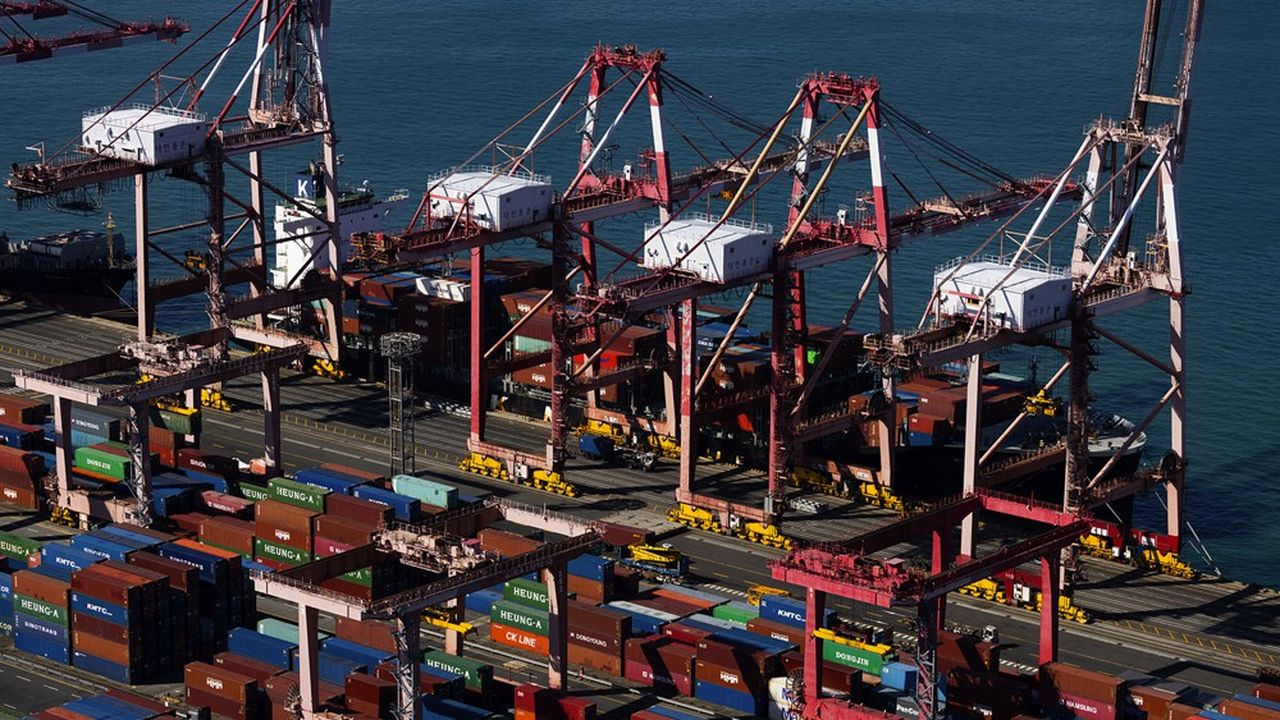
Want to make people rich? Trade and invest. That’s what South Korea did. In 1953, this Asian country had a GDP per capita of $67, making it one of the poorest countries in the world. By 2023, it had risen to over $34,000, a level equivalent to that of the European Union. China is of course another spectacular example. In 1990, the country accounted for only 7% of the GDP of the United States. By 2022, that figure had reached 73%. China’s per capita income of about $13,000 today is about 17% of the per capita income of the United States. It was less than 2% in 1990.
These miraculous results have been made possible by the development of world trade. This is the message, unsurprisingly, of the World Trade Organization (WTO) in its annual report on world trade, published on Monday. “The main message to take away is the transformative role of trade in reducing poverty and creating shared prosperity, contrary to the currently fashionable idea according to which trade and institutions such as the WTO (…) generate a more unequal world”, asserts the Director General of the Organization, Ngozi Okonjo-Iweala, in the preamble to the document. To see.
There is “strong evidence of the critical role that trade has played in reducing the income gap between economies,” the paper says. “The share of people living in extreme poverty in low- and middle-income economies has fallen from 40% to about 11% since 1995, while the share of trade in GDP in these economies has doubled from about 16% to 32%,” WTO Chief Economist Ralph Ossa said at a press briefing on Monday.
Between 1995 and 2023, global per capita income increased by about 65% while per capita income in poor and developing countries nearly tripled. “Our estimates suggest that up to a third of this convergence can be attributed to reduced trade costs,” Ossa added.
Convergence of wealth
Globalization has therefore favored this “Great Convergence” of wealth thanks to the fall in transportation and communication costs, but also to the reduction of trade barriers and the increase in economic cooperation. Customs tariffs fell by almost 40% after the Second World War. They have decreased by more than two-thirds over the last three decades, from 6.9% in 1996 to 2% in 2022.
In the 1980s, France, Japan, the United Kingdom, the United States and other developed economies accounted for more than 60% of global GDP. Today, the situation has reversed: Brazil, China, Indonesia and other developing economies account for nearly 60% of global GDP and developed economies account for just over 40%.
However, not all countries are in the same boat. Not all have integrated into world trade. A third of poor and developing countries (13% of the world’s population) have been left behind. These countries are concentrated in the Middle East, North Africa, sub-Saharan Africa and Latin America. In reality, convergence is mainly valid for Asian and European economies. Where does the problem come from?
Investment by multinationals
It is to be sought directly at the level of foreign investments. Let us not delude ourselves, participation in trade and economic diversification are closely intertwined with the activity of multinational companies and their global production chains. More than two-thirds of international trade is generated by these multinationals and their investments.
The WTO notes that lagging countries have received much less foreign direct investment (FDI) than other countries that have managed to become richer and more integrated into world trade. FDI flows to poor countries in the Middle East, North Africa and sub-Saharan Africa are lower than elsewhere. As a result, the 46 least developed countries (more than 880 million people) in these regions account for only 1% of world trade. This share has stagnated since 1995. It has even fallen to less than 1% in the last two years. Globalization has therefore not benefited everyone.





